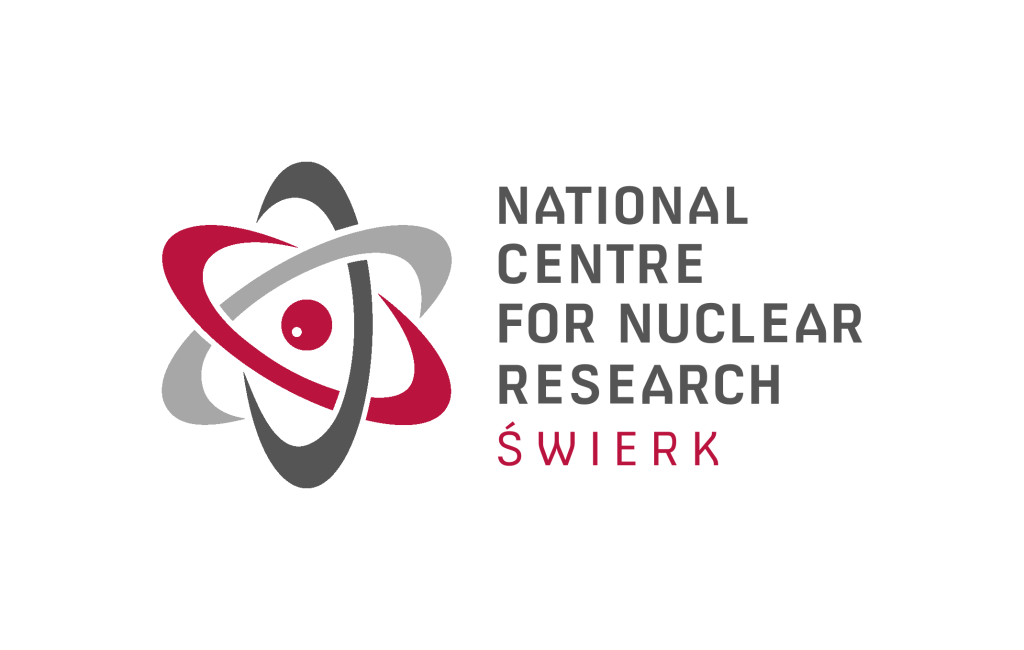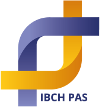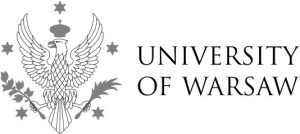TRAINING MATERIALS
Introduction to Parallel Programming: MPI
TOPIC: Introduction to Parallel Programming: MPI
SPEAKER: Maciej Szpindler, Interdisciplinary Centre for Mathematical and Computational Modelling UW
SUMMARY: The second training on the parallel programming elements and infrastructure of the LUMI project. In this part, participants will learn about the programming model in a distributed memory architecture using the MPI (Message Passing Interface). The lecture part is complemented by a practical session during which the participants have the opportunity to apply the discussed issues themselves.
AI in medicine. From classification to generative models
TOPIC: AI in medicine. From classification to generative modelsh
SPEAKER: Marek Justyna, Poznan Supercomputing and Networking Center
SUMMARY: The presentation presents examples of scenarios for using AI models to process medical imaging data (X-ray and CT). The example scenarios include classification, segmentation, and transformation with generative models. Data specificity issues, preprocessing methods, and solution quality assessment methods are discussed
Introduction to Parallel Programming: OpenMP
TOPIC: Introduction to Parallel Programming: OpenMP
SPEAKER: PhD Michał Hermanowicz, Interdisciplinary Centre for Mathematical and Computational Modelling UW
SUMMARY: First training on the elements of parallel programming (OpenMP, MPI) and the infrastructure of the LUMI project. In this part, participants will learn about the mechanisms of parallel programmes, the principles of their creation, compilation, and running in a shared memory architecture (OpenMP). The lecture part is complemented by a practical session during which the students have the issues opportunity to apply the discussed on their own.
Linear models in practice - modelling the number of deaths depending on smog and weather
TOPIC: Linear models in practice – modelling the number of deaths depending on to smog and weather
SPEAKER: PhD Tomasz Fruboes, National Centre for Nuclear Research
SUMMARY: In January 2017, an increase of 30% was observed in the number of deaths in Poland compared to the number of deaths observed a year earlier. The presentation presents an analysis of data on the number and causes of deaths observed at Bielanski Hospital in Warsaw. It is shown how methods are used to assess to what extent the excess of the observed number of deaths is anomalous. One of these is the use of a generalised linear model to try to explain whether the low temperatures and high levels of air pollution observed in a given month can explain the excess deaths.
Introduction to Computing on computers ICM
TOPIC: Introduction to Computing on computers ICM
SPEAKER: PhD Michał Hermanowicz, Interdisciplinary Centre for Mathematical and Computational Modelling UW
SUMMARY: Training is aimed at both new and experienced supercomputer users. They will learn about the characteristics of ICM computing resources and the basics of their use. The topics covered include task ordering for the queuing system, application modules, and selected elements of operating the GNU/Linux environment. Participants will learn about available resources: Topola, Okeanos and Lynx (GPU/PBaran), as well as the rules for accessing them (logging in, file system / copying data, editing / file operations, utility applications / module system, SLURM queuing system) and basic instructions.
From simple classifiers to convolutional neural networks
TOPIC: From simple classifiers to convolutional neural networks
SPEAKER: PhD Jakub Zieliński, Interdisciplinary Centre for Mathematical and Computational Modelling UW
SUMMARY: The presentation discusses the basic classifiers used in machine learning. KNN, SVM, the fundamental differences between them and the relationship between SVM and perceptron. Shallow neural networks (sequential) and their most important geometrical properties are presented, as well as their implications for network capabilities and the risk of overfitting. Classifiers based on convolutional networks are discussed and typical components of such complex networks are shown. The talk concludes with some examples of network use: analysis of MRI images of the Achilles tendon, applications in cardiac and lung function assessment.
One-Dimensional Models in supervised learning
TOPIC: One-Dimensional Models in supervised learning
SPEAKER: PhD Jakub Zieliński, Interdisciplinary Centre for Mathematical and Computational Modelling UW
SUMMARY: In the second presentation, one-dimensional models in supervised learning are presented. Shown are:
– Generalisations of classical regression with a different penalty function. These schemes are much more robust to disturbances caused by the presence of outliers;
– Application examples: prediction of energy or water consumption as a function of time and heart rate change in the presence of paroxysmal arrhythmia;
– Multivariate regression, situations where the number of predictors and hence fitting parameters is large compared to the number of observations;
– Two models: LASSO and Elastic-Net;
– Simple classifiers: logistic regression, KNN, SVM, perceptron.
Machine learning in biomedical data analysis
TOPIC: Machine learning in biomedical data analysis (ECG and microscopic images)
SPEAKER: PhD Jakub Zieliński, Interdisciplinary Centre for Mathematical and Computational Modelling UW
SUMMARY: The presentation discusses the currently most important issues of unsupervised machine learning: dimensionality reduction, separation of superimposed signals, and clustering. Theoretical foundations and examples of applications of machine learning in medicine and biology are also presented, as well as issues such as microscopic image analysis, classification of rat vocalisations, and analysis of the human foetal ECG signal (separation of signals: mother, foetus, and noise).
EuroCC tutorial on transfer learning in computer vision
TOPIC: EuroCC tutorial on transfer learning in computer vision – part
SPEAKER: Michał Obara, National Centre for Nuclear Research
SUMMARY: Transfer learning is a machine learning (ML) technique of reusing models with pre-trained knowledge obtained for a general ML task, and applying it to another, more specific ML task, with limited training data or computational resources. This hands-on training will cover the following topics in computer-vision-related problems:
– introduction to transfer learning in computer vision,
– image classification with feature extraction – using a downloadable model with pre-trained parameters for a custom classification task,
– image classification with fine-tuning – update parameters of a pre-trained model to get better results,
– demonstration of handling imbalanced data set for transfer learning in image classification.
EuroCC technical tutorial on LUMI European Pre-Exascale Supercomputer – parts 1 and 2
TOPIC: EuroCC technical tutorial on LUMI European Pre-Exascale Supercomputer – part 1
SPEAKER: Maciej Szpindler, ACK Cyfronet AGH (ACC Cyfronet AGH)
SUMMARY: The LUMI is one of the European pre-exascale HPC systems hosted by the LUMI consortium. The LUMI (Large Unified Modern Infrastructure) consortium countries are Finland, Belgium, Czech Republic, Denmark, Estonia, Iceland, Norway, Poland, Sweden, and Switzerland. This one-day tutorial presents a technical overview of the system’s hardware configuration and programming level environment. The aim of the course is to popularize hardware design of the compute nodes and network and associated programming environment. This introductory material is meant to be a quick-start for those who consider access to the LUMI resources and brief introduction to the software tools available and capabilities of the hardware.
Optimisation of HPC applications in a cluster computing environment using the WRF numerical weather model as an example
TOPIC: Optimisation of HPC applications in a cluster computing environment using the WRF numerical weather model as an example
SPEAKER: Prof. Mariusz Figurski, Gdańsk University of Technology, IMGW
SUMMARY: Introduction to parallel computing in computing clusters, design of parallel algorithms – the problem of task decomposition, what numerical weather models are, their advantages and disadvantages, models of parallel computing used in the WRF model, ways of compilation, optimisation and validation of computation. The basics of parallel computing, numerical weather models – basics based on the WRF model, implementation of computation in the WRF model, optimisation and validation and benchmarking of supercomputers using the WRF numerical weather model are presented.
Quantum Chemistry Calculations: Gamess and Gaussian Programmes: Examples of Applications in Designing New Functional Materials
TOPIC: Quantum Chemistry Calculations: Gamess and Gaussian Programmes: Examples of Applications in Designing New Functional Materials
SPEAKER: PhD. Dsc. Maciej Bobrowski, Gdańsk University of Technology
SUMMARY: The general ideas of quantum chemistry methods are presented, from the practitioner’s point of view, and examples of their application in the design of new functional materials: low pressure chemical vapour deposition (LPCVD) polymers and liquid thermoelectric materials. Limitations of such methods are also presented. An example is shown of the use of quantum chemistry methods in the further design of quantum-classical combinatorial algorithms, which in turn can be used to analyse larger systems, i.e. composed of many thousands of atoms. The study of the electron structure and its inclusion in the calculations is discussed, but also the analysis of this structure and the drawing of relevant conclusions. During the training, using a PC and a supercomputer of the CI TASK, the lecturer presented numerous examples of the use of Gamess and Gaussian software, including methods of using these programmes on the Triton supercomputer. Examples of performing calculations with various quantum chemistry methods are presented, starting with Hartree-Fock methods and ending with multi-configuration methods with correction calculations using perturbation methods. Also presented is a method for graphical visualisation of the results obtained.
Thermal Fluid Flow Process Analysis using ANSYS software
TOPIC: Thermal Fluid Flow Process Analysis using ANSYS software
SPEAKER: Ph.D. associate professor Sławomir Pietrowicz Eng, WUST Prof., Ph.D. Przemysław Błasiak Eng., Ph.D. Józef Rak Eng., Wrocław University of Science and Technology
SUMMARY: Training consists of two parts. The basic laws used during numerical simulations of thermal-fluid processes are discussed, followed by the equations, in differential form, used to describe the processes in question. The technique of implementing these equations in a CFD-type programme is shown, as well as the practical fundamentals of numerical fluid mechanics (CFD).In the workshop part, the following elements of numerical modelling are discussed:
– preparation of three-dimensional geometry
– discretisation and numerical meshes
– programming of calculations, boundary conditions
– operation of the numerical solver
– Processing of results, their visualisation and interpretation
– Optimisation of the studied system and practical conclusions from the simulations performed.
Introduction to the Implementation of physical models using OpenFOAM
TOPIC: Introduction to the Implementation of physical models using OpenFOAM
SPEAKER: Ph.D. Przemysław Błasiak Eng., Wrocław University of Science and Technology
SUMMARY: OpenFOAM is a free, continuously developed software to create computational fluid dynamics (CFD) simulations. The training discussed how OpenFOAM can be programmed using the C++ language. An example of a boundary condition implementation is also shown. The following topics are presented:
– C++ in OpenFOAM
– description of the most commonly used classes in OpenFOAM
– Implementation of the energy equation in simple foam
– an example of an implementation of a boundary condition.
Introduction to performing numerical calculations using OpenFOAM
TOPIC: Introduction to performing numerical calculations using OpenFOAM
SPEAKER: Ph.D. Przemysław Błasiak Eng., Wrocław University of Science and Technology
SUMMARY: OpenFOAM is a free, continuously developed software to create computational fluid dynamics (CFD) simulations. During the training, the following topics were discussed:
– Introduction to calculations using the example of a lid-driven cavity flow
– creation of a numerical mesh using the blockMesh tool.
– preparation of a numerical simulation
Visualisation of results using ParaView and OpenFOAM tools.
OpenFOAM - Computational Fluid Dynamics (CFD) Numerical Simulation Software
TOPIC: OpenFOAM – Computational Fluid Dynamics (CFD) Numerical Simulation Software
SPEAKER: Ph.D. Przemysław Błasiak Eng., Wrocław University of Science and Technology
SUMMARY: The fully free professional tool OpenFOAM has a growing user base. It is used by scientists and engineers from industrial concerns, including large automotive companies. The software is used to create CFD (computational fluid mechanics) simulations, including multiphase flows, heat transfer, combustion processes, fluid dynamics, and materials engineering. Training programme:
– a brief introduction on the equations to be solved and the finite-volume method
– What OpenFOAM is and what it is used for
– Typical workflow using OpenFOAM
– File structure in OpenFOAM
– Introduction to applications and libraries in OpenFOAM
– Example implementation of physical equations in OpenFOAM.
Workshop on transfer learning in NLP
TOPIC: Workshop on transfer learning in NLP
SPEAKER: PhD Paweł Przewłocki, National Centre for Nuclear Research
SUMMARY: A workshop on using BERT-type models and the Huggingface library for natural language processing. It is shown how to easily use off-the-shelf models and to train them on your datasets, as well as how to:
– use the Huggingface library models;
– prepare datasets (text corpora) for learning,
– train the models in order to, inter alia, classify texts,
– interpret the results.
Training materials from National Competence Centres in HPC from other European countries participating in the EuroCC project
You can find materials on any HPC domain and training materials, including presentations and recordings of webinars and workshops, organised within the framework of the EuroCC project by National Competence Centres in HPC from different European countries, here.











